It's an exciting year for the team of Proefcentrum Hoogstraten, as research after research kicks off in their new facilities. In April, the newly built greenhouses were inaugurated, and today, two new indoor climate cells were opened. At the same time, the center presented its expanded sensor network in its tomato, pepper, and strawberry greenhouses.
"With the introduction of advanced indoor cells and the intensive application of sensor technology during both propagation and production, Proefcentrum Hoogstraten contributes to a future in which knowledge, precision, and sustainability go hand in hand", said Proefcentrum Hoogstraten direcotr Tom van Delm. "These investments strengthen research and the further development of knowledge, providing growers with new insights and tools to manage their crops in a smart and efficient way."
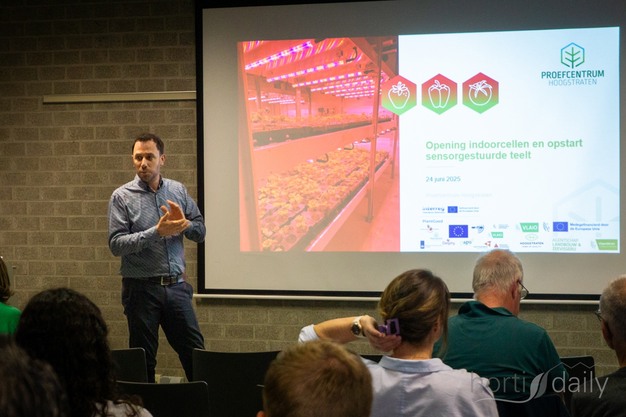 © Arlette Sijmonsma | MMJDaily.com
© Arlette Sijmonsma | MMJDaily.com
Daylight-free cultivation under controlled conditions
The indoor facility includes two separate cells for practice-oriented research. The cells, designed by Light4Food, controlled by a Priva system, are equipped with 4 channel, fully dimmable Mechatronix lights, Growtec gutters and a MJ-Tech high pressure fogging system.
 © Arlette Sijmonsma | MMJDaily.com
© Arlette Sijmonsma | MMJDaily.com
The Light4Food team
Strawberry production
The first cell is used for strawberry production in a three-layer system. The research focuses on analyzing crop performance under fully controlled climate conditions, where light, temperature, and humidity can be independently managed. PCH has previously built experience with single-layer systems, movable-gutter systems, and four-layer greenhouse cultivation. The new cell allows further comparison of these systems in terms of spatial and energy use.
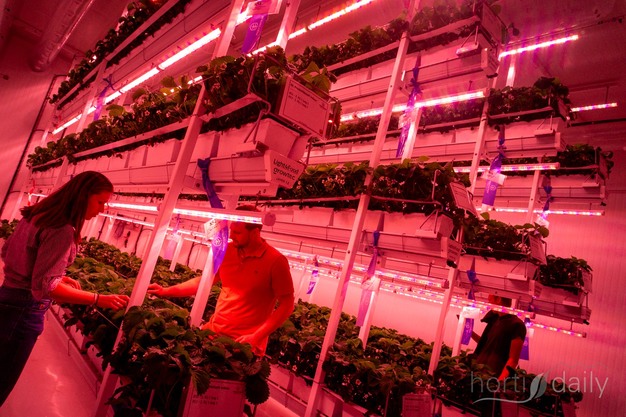 © Arlette Sijmonsma | MMJDaily.com
© Arlette Sijmonsma | MMJDaily.com
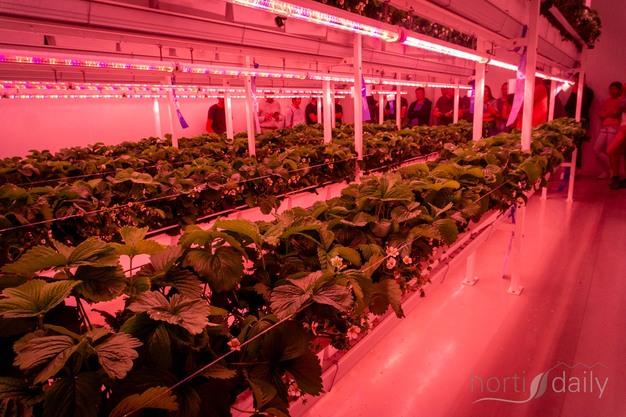 © Arlette Sijmonsma | MMJDaily.com
© Arlette Sijmonsma | MMJDaily.com
Young plant propagation
The second cell is designed for young plant propagation on tables. The six grow tables are used within the PlantGoed project, which explores year-round propagation of young plants for greenhouse production. Daylight-free propagation is applied to decouple production from natural daylength and outdoor temperatures.
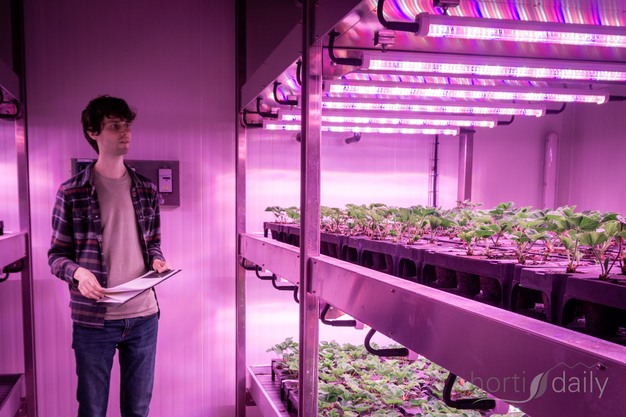 © Arlette Sijmonsma | MMJDaily.com
© Arlette Sijmonsma | MMJDaily.com
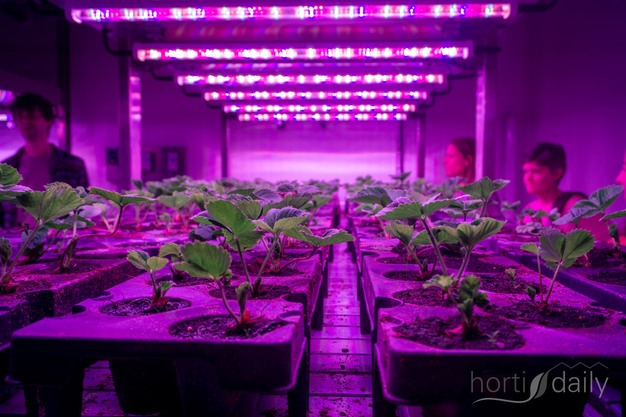 © Arlette Sijmonsma | MMJDaily.com
© Arlette Sijmonsma | MMJDaily.com
"From a research perspective, it is interesting to be able to work independently of external conditions", said researcher Stef Laurijssen. "We are aware of the free energy provided by sunlight in greenhouse or outdoor cultivation, but that doesn't mean valuable insights can't be gained from daylight-free cultivation. These findings will certainly be translated into more conventional cultivation systems."
Sensor-based monitoring of plant and climate
In addition to the indoor cells, PCH has expanded its sensor network significantly. With over 200 measurement points installed across the strawberry, tomato, and pepper departments, data-enthusiasts may feel like a kid in a candy store.Sensors used are Sendot, Aranet, SenseNL, Sigrow, Vivent and Apogee. This collection enables the team to collect data on three levels: local climate variations, substrate moisture, and plant physiological parameters.
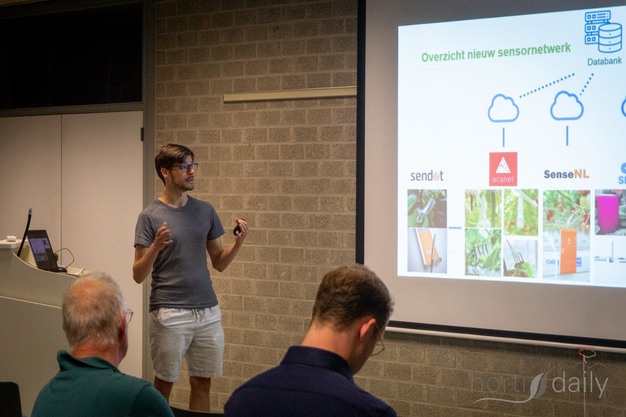 © Arlette Sijmonsma | MMJDaily.com
© Arlette Sijmonsma | MMJDaily.com
PCH researcher Vincent Greffe explained how data enables researchers and growers to learn more precisely based on real-time plant information. "First, we can now better map small climate variations across different locations within a greenhouse section", he explained. "In addition, we now have a large number of sensors measuring substrate moisture. This gives us for example the ability to manage water more efficiently."
"Finally, we also have several highly innovative sensors that measure specific plant parameters. For example, we can now measure how active the plant is and how efficiently it converts light into energy. This gives us a continuous view of plant health."
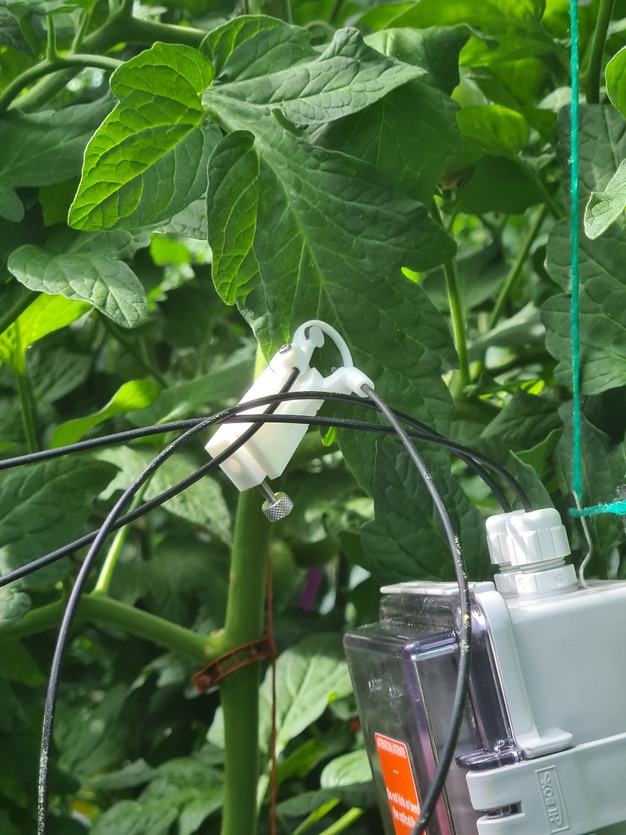 © Proefcentrum Hoogstraten
© Proefcentrum Hoogstraten
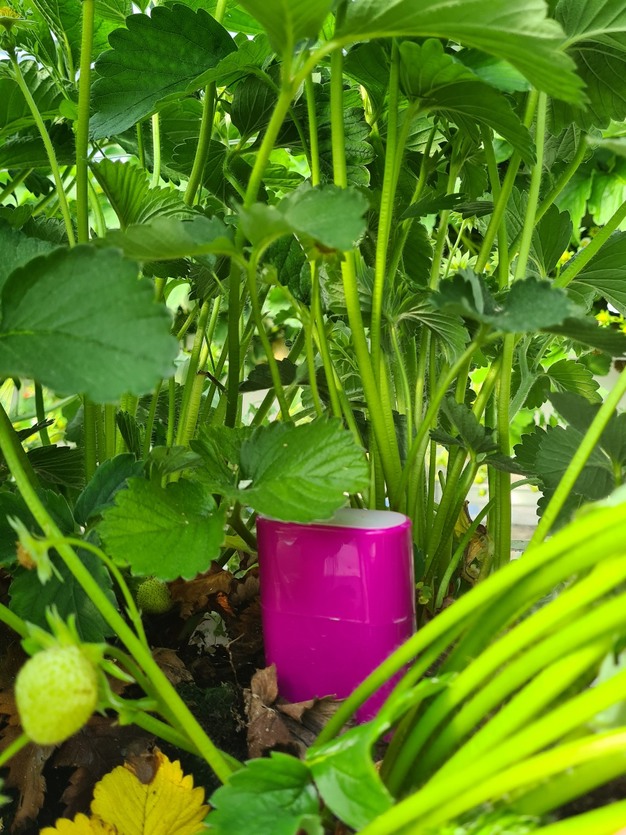 © Proefcentrum Hoogstraten
© Proefcentrum Hoogstraten
Research infrastructure supported by European and regional cooperation
The new infrastructure was realized within the framework of the INTEREST project (ERDF), the PlantGoed project (Interreg Flanders–Netherlands, Province of Antwerp, VLAIO), and with support from the Flemish Agricultural Investment Fund (VLIF) and of course the Coöperatie Hoogstraten growers.
The installations are used for both fundamental and applied research. Growers are involved through workshops and demonstrations, aimed at implementing sensor-driven strategies in commercial practice.
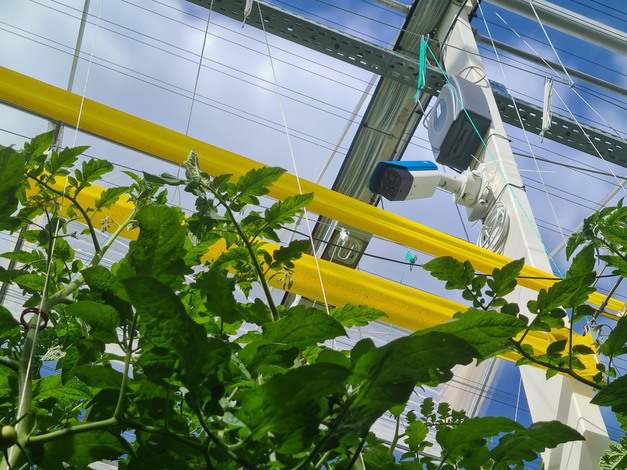 © Proefcentrum Hoogstraten
© Proefcentrum Hoogstraten
For more information:
Proefcentrum Hoogstraten
www.proefcentrum.be
